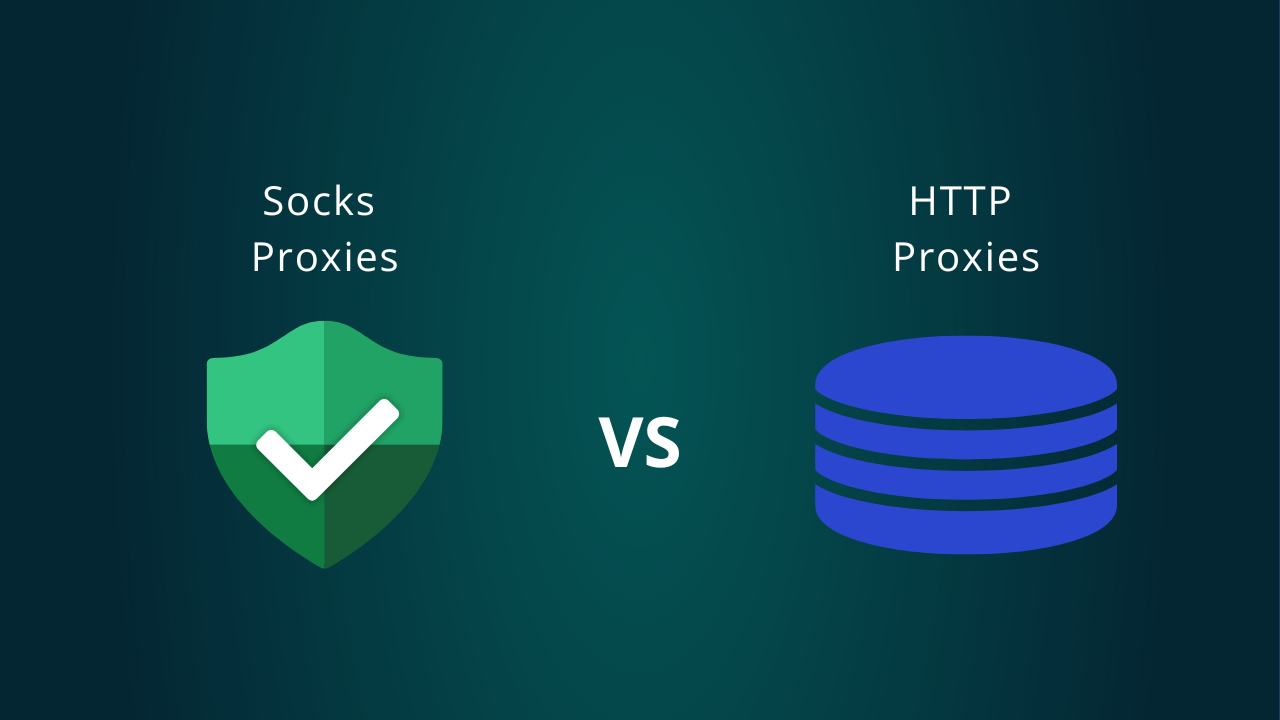
आवासीय प्रॉक्सीज़ ने 23 अप्रैल को 220,000 यूएस आईपी जोड़े।


AI वेब डेटा स्क्रैपिंग अनन्य प्रॉक्सी योजना [ असीमित ट्रैफ़िक, 100G+ बैंडविड्थ ]

 Language
Language

When choosing a proxy server, it is crucial to have a deep understanding of how SOCKS and HTTP proxies work. Each proxy type has its own unique advantages and application scenarios in terms of handling network traffic, privacy protection, and performance optimization. Whether it is used to browse the web, download files, or ensure anonymity, only by mastering the configuration and transmission mechanism of these proxies can you flexibly switch between different types of proxies and find the most suitable proxy service provider for your specific needs. This article will explore the differences between the two, their respective advantages, and their applicable scenarios to help you make the best choice.
A proxy server is an intermediary server that sits between users and the Internet. The user's request is first sent to the proxy server, which then forwards the request to the target server. The target server's response is also returned to the user through the proxy server. In this way, the proxy server can hide the user's real IP address, providing additional security and privacy protection.
SOCKS (Socket Secure) is a network protocol that allows clients to communicate with the target server through a proxy server. SOCKS proxy can handle any type of traffic, including HTTP, FTP, SMTP, etc., so it is widely used in various network applications.
SOCKS proxy forwards data packets from the client to the target server by establishing a tunnel on the TCP connection. The user's request is first sent to the SOCKS proxy server, and the proxy server then forwards the request to the target server. Since SOCKS proxy does not process data, it can support a variety of protocols and applications.
HTTP proxy is a proxy server designed specifically for processing HTTP and HTTPS protocols. It is mainly used for web browsing and can cache web pages, filter content, and speed up access.
HTTP proxy receives the user's HTTP request, forwards the request to the target web server, and returns the response to the user. If the proxy server turns on the cache function, it can store the data of common web pages so that the next request can provide the result directly from the cache without re-acquiring.
In the selection of proxy servers, SOCKS4, SOCKS5, HTTP and HTTPS each have different characteristics and applicable scenarios.
SOCKS4 is a basic proxy type that supports TCP traffic but does not provide encryption, and is suitable for simple data transmission needs. In contrast, SOCKS5 is more flexible, supports TCP and UDP, and provides user authentication and encryption functions at the same time, which is suitable for complex network applications such as P2P downloads and online games.
HTTP proxy focuses on processing web page requests and is suitable for daily browsing needs, but its privacy protection is weak. HTTPS proxy targets encrypted HTTPS traffic to ensure the security of data transmission and is suitable for scenarios that handle sensitive information. Understanding the working principles and advantages of these proxies can help users make the best choice based on their specific needs.

Which proxy type should you choose depends on your specific needs and business. Our proxy supports multiple protocol integrations, and you can switch between them as needed. After learning about the two types of proxies, we will outline how you should choose from 4 aspects:
Multi-protocol support: If you need to handle multiple types of traffic (such as HTTP, FTP, etc.), SOCKS proxy is a better choice.
Mainly used for web browsing: If your main need is to browse web pages, HTTP proxy may be more suitable because it is fast and easy to configure.
Sensitive data: If you need to handle sensitive data (such as online banking, e-commerce, etc.), it is recommended to use SOCKS proxy to provide higher security.
Network security protection: HTTP proxies are widely used in network security and email protection because they can filter data. They are also helpful for web crawling and data collection projects.
HTTP proxies can only support processing HTTP(S) traffic, but they are faster because they can cache response data between the client and the web server, reducing the load on the server.
SOCKS proxies support multiple protocols such as FTP and SMTP, and are more flexible to use. But because they cannot understand network traffic, they are very suitable for accessing connections behind firewalls.
Strong technical foundation: If you have a certain understanding of network configuration, you can choose SOCKS proxy for greater flexibility and functionality.
Beginners: If you are a beginner, it is recommended to choose HTTP proxy because its configuration is relatively simple.
When choosing between SOCKS proxy and HTTP proxy, the most important thing is to clarify your usage needs. If you need to handle multiple network protocols, focus on anonymity, or perform complex network operations, SOCKS proxy is a more suitable choice. If you mainly use it to filter data, increase loading speed, or perform network content control, then HTTP proxy will be a more efficient tool.
Luna Proxy supports HTTP(S) and SOCKS proxies, with no restrictions on concurrency and bandwidth, and an average response time of <0.6s. In addition, we also provide detailed third-party tool integration solutions. If you are interested, you can check the distributed integration tutorial. If you have any questions, please feel free to contact us at [email protected] or online chat.
